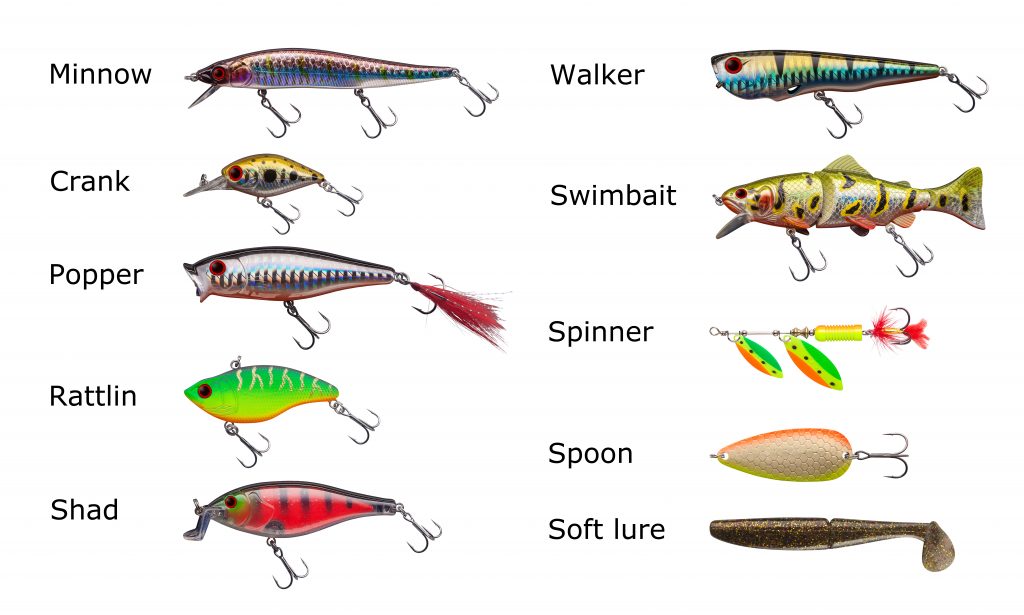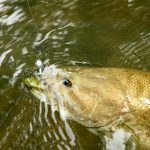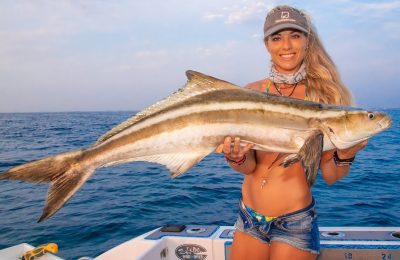It is one of the quintessential questions in fishing: Live bait or lures? There are experienced anglers who swear by one or the other and will argue their merits until even the fish are tired of the argument. But make no mistake, there is an answer to this centuries old question.
As with most of life’s important questions – lease or buy, red or white, should I stay or should I go, now? – the answer depends on the situation and the desired outcome. For live bait vs lures, the answer depends on weather conditions, the target species, and the angler’s competence.
Since lures and tackle bring in much more business income, the bulk of advertising and articles focus on these sellable items. Still, make no mistake, the predominance of anglers use natural baits.

There is also a belief among novice, and even experienced, anglers that every fisher starts out with live bait and then matures into using lures and flies. So let’s look at the differences and see when to use each to bring home that trophy catch.
Types of Live Bait
For many anglers, the concept of live bait just makes sense. Game fish are hunting carnivores and, when it comes right down to it, lures are designed to mimic what they eat. However, knowing what to use is important to get that game fish to the table.
The smart angler knows what type of bait is preferred by the target fish, as well as the best way to place the hook. Proper hook placement means correct motion as well as the best chance to set the hook once the bait is hit.
There are dozens of different baits to use, however there are a few standards that every angler relies upon. For freshwater fishing, the best live baits are:
- Minnows
- Wax Worms
- Mealworms
- Butter worms
- Frogs
- Crickets
- Crayfish
- Night crawlers
If heading onto saltwater, the best live baits and saltwater lures out there are:
- Mullet
- Crabs
- Shrimp
- Sardines
- Squid
- Pinfish
- Minnows
Minnows are by far the most common, as a large variety of game fish feast on the young of other fish. Still, don’t overlook the benefits of night crawler worms and other small edibles.
Advantages and Disadvantages
Live bait has some distinct advantages. For one, it offers the fish a meal they recognize and are ready to eat. Many game fish are attracted by scent, especially the blood of an injured baitfish, and will immediately become intrigued. Finally, it is easy to get and use live bait.
Still, using live bait isn’t all sunshine and trophy catches. For one, fishing with live bait can be messy. Very messy. Pushing a hook through a living creature means blood, guts, and gook.
In addition, live bait has to be kept, well, alive. This can be time consuming and, often, complicated. Not to mention the live bait is limited in that it has to either be caught first or purchased, whereas a lure never runs out.
Artificial Lures – The Call of The Wild
Lures are an effective means of fishing, especially when bait is scarce, but it does take time to figure out. It takes learning, practice, and up-front money that can be discouraging to many.

Still, it is the way to go for many professionals and amateurs alike. Artificial lures are intended to mimic the look, sound, and movements of live bait. So, just like with live bait, knowledge of the intended target fish is important.
Types of Lures
As with live bait, there are many types of lures. Some popular options include:
- Artificial flies
- Decoy fish
- LED lures
- Spinner bait
- Swim bait
- Spoon lures
- Floating and diving lures
- Sinking lures
The right type of lure – something that mimics the actions of the live bait the target fish eats – is essential. In addition, the angler must learn how to work that specific lure so it mimics properly while also floating or sinking correctly.
Advantages and Disadvantages
The primary advantages of a lure are that it is easy to carry, doesn’t have to be kept alive, and can be used a nearly infinite number of times. This makes it more convenient to use and there’s none of the mess and fuss with live bait.
In addition, multiple lures can be kept in the same tackle box. That means if the fish aren’t interested in minnows at the moment, an angler can switch to a frog, then to a worm, and so on. That type of variety is nearly impossible with live bait.
Still, like all good things, there are down sides to lures. For one, it can be time consuming and difficult to learn what movements are best for each lure as well as the best way to cast and retrieve them.
Lures have to be moved and worked, constantly. Fishing lures cannot be done by just hanging a line in the water and getting a drink. This type of fishing can be tiring for angler and fish alike.
Finally, lures don’t’ entice predators with smell. That means an angler must be able to find the fish and get the lure to that fish before it will consider striking the target.
Here are some great bass lures we recommend.
Choose – Wisely
So, all of this brings it back to the original, and essential, question: Which is better, live bait or lures? In the end it comes down to target fish and the angler. Lures require the angler to be more actively involved.
Lure fishing is akin to stalking and hunting prey instead of laying a trap.
Bait fishing, on the other hand, can be done while relaxing. The classic image of an angler sitting on the river bank with a cane pole in the water wouldn’t make sense if that pole was rigged with a lure.
This is similar to setting a trap and then going about the day until an animal springs the trap.
Whether you choose artificial lures vs live bait, the result is still the same: a great day of fishing and, hopefully, a fine meal at the end.







